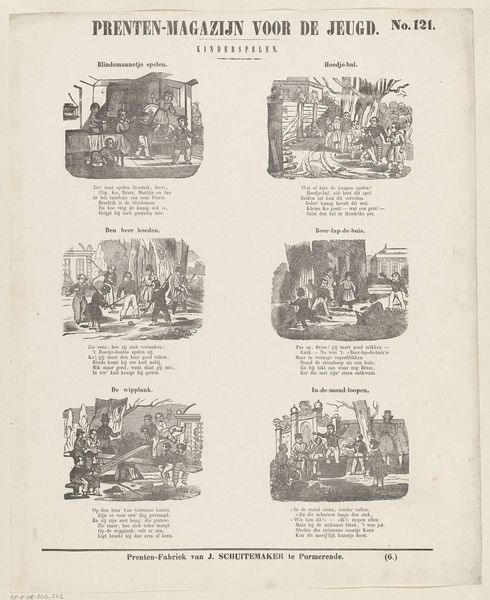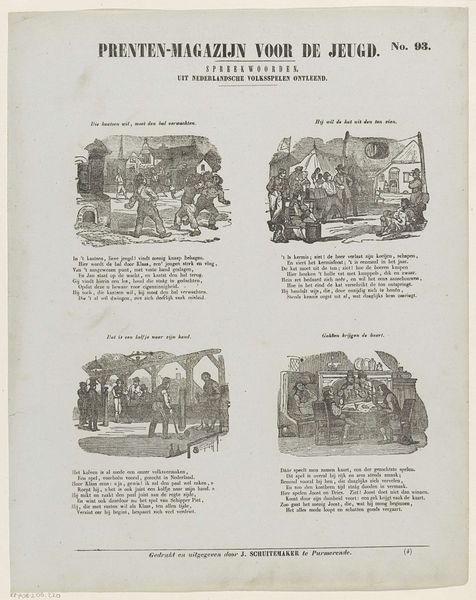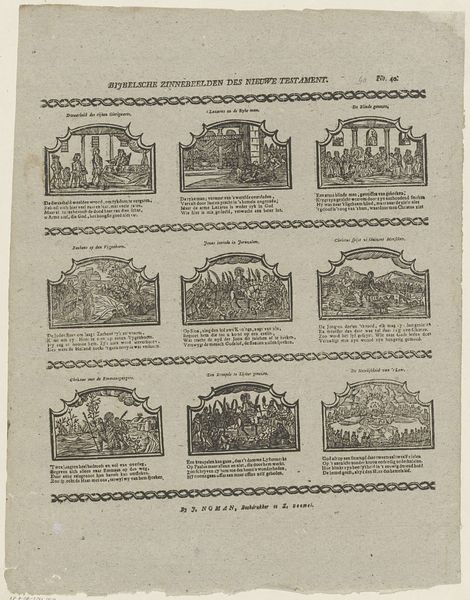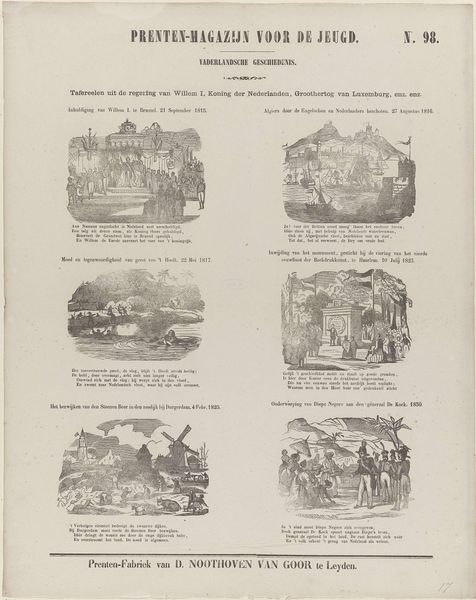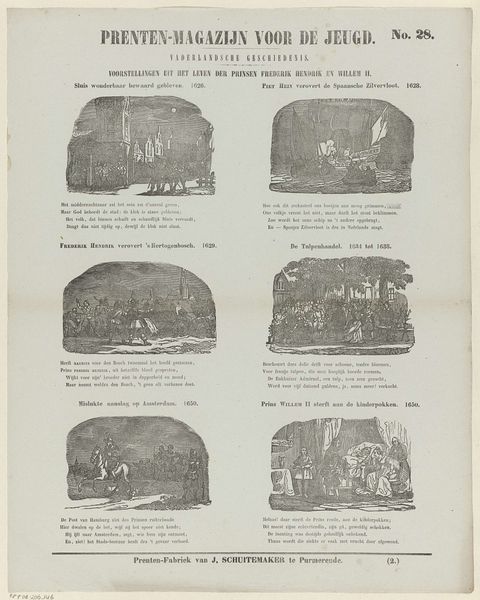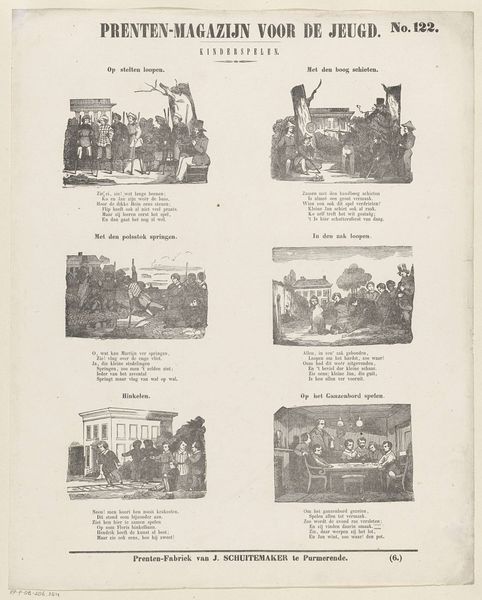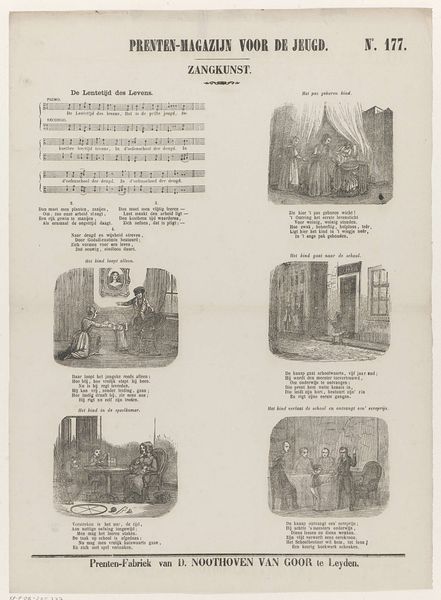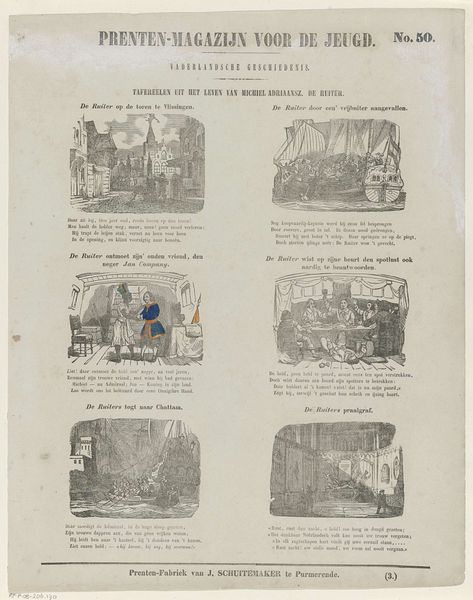
print, engraving
# print
#
old engraving style
#
genre-painting
#
history-painting
#
engraving
Dimensions: height 421 mm, width 313 mm
Copyright: Rijks Museum: Open Domain
Editor: This engraving, "Tafereelen uit den Belgische opstand" – Scenes from the Belgian Uprising – by Dirk Noothoven van Goor, created between 1850 and 1881, gives a birds-eye view of a series of battle events. The small frames depicting the scenes have descriptive text beneath. What does this piece tell us about the way history was understood, and presented to the public, at this time? Curator: This print offers a fascinating glimpse into 19th-century nation-building and the construction of historical narratives. It's titled “Scenes from the Belgian Uprising,” and presented under the heading "Fatherland History" – indicating its intention to instill patriotic sentiments in young audiences. Note the series of events selected, and the manner in which they are visually represented. What stories do these images tell and for what audience? Editor: It looks like propaganda! The heroic deaths, battles, the details… All shaping a particular view. But it seems more complex than just one clear-cut message. Why make it for children specifically? Curator: Precisely! Examining such artwork, created as part of the rise of mass media and popular culture, we are led to consider the pedagogical and propagandistic function of such imagery within 19th century culture. How were ideas about national identity transmitted, normalized, and instilled in younger generations? This series of images provided easily digestible visual representations that framed Belgium's independence as both a noble and divinely sanctioned event. Also notice the language in the text, seemingly trying to over persuade us. How does that reflect power dynamics between those in charge of what's "true," versus those simply wanting "the truth?" Editor: So, beyond the literal depictions of battles, this piece is actively participating in the creation of national identity by showing certain scenes from certain points of view. It feels so deliberate. Curator: Indeed! By looking at the context and considering its intent, we can move beyond the face-value and learn much more. I am reminded of how museums also shape understanding with selected images. Editor: I didn’t realize how much political work could be embedded in what appears to be a simple historical print. Thank you!
Comments
No comments
Be the first to comment and join the conversation on the ultimate creative platform.
